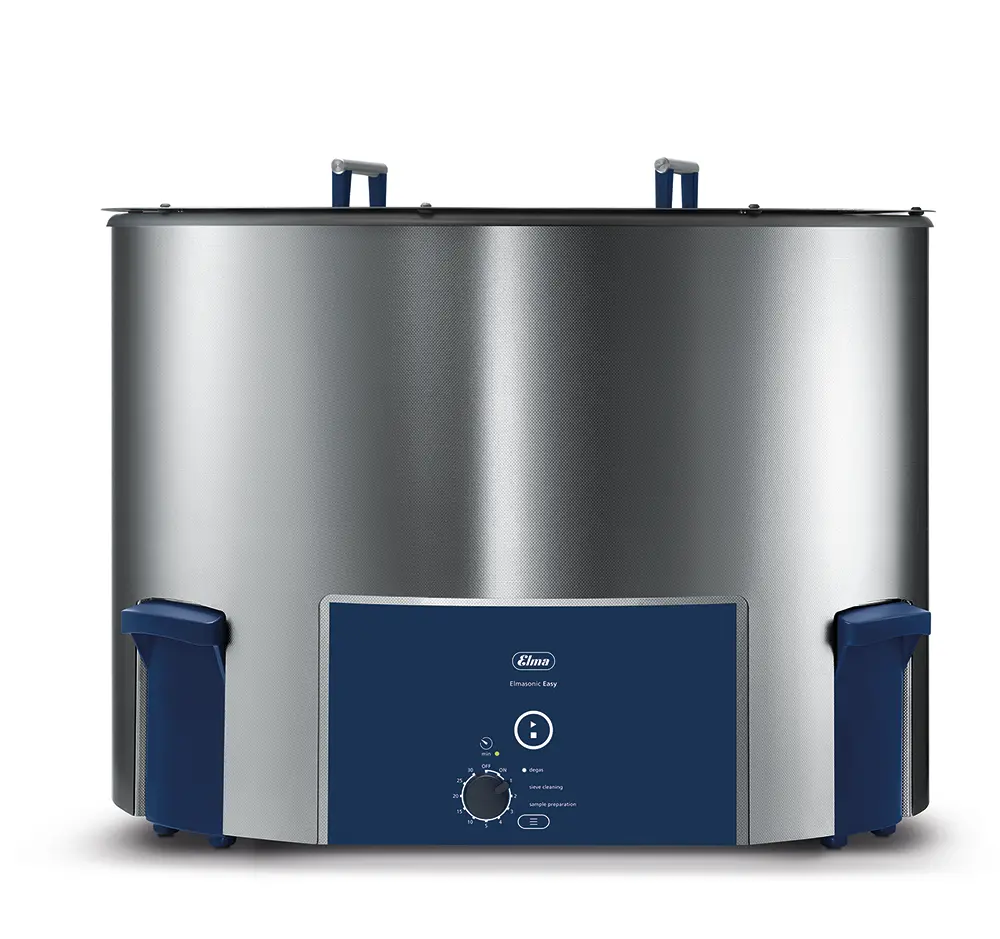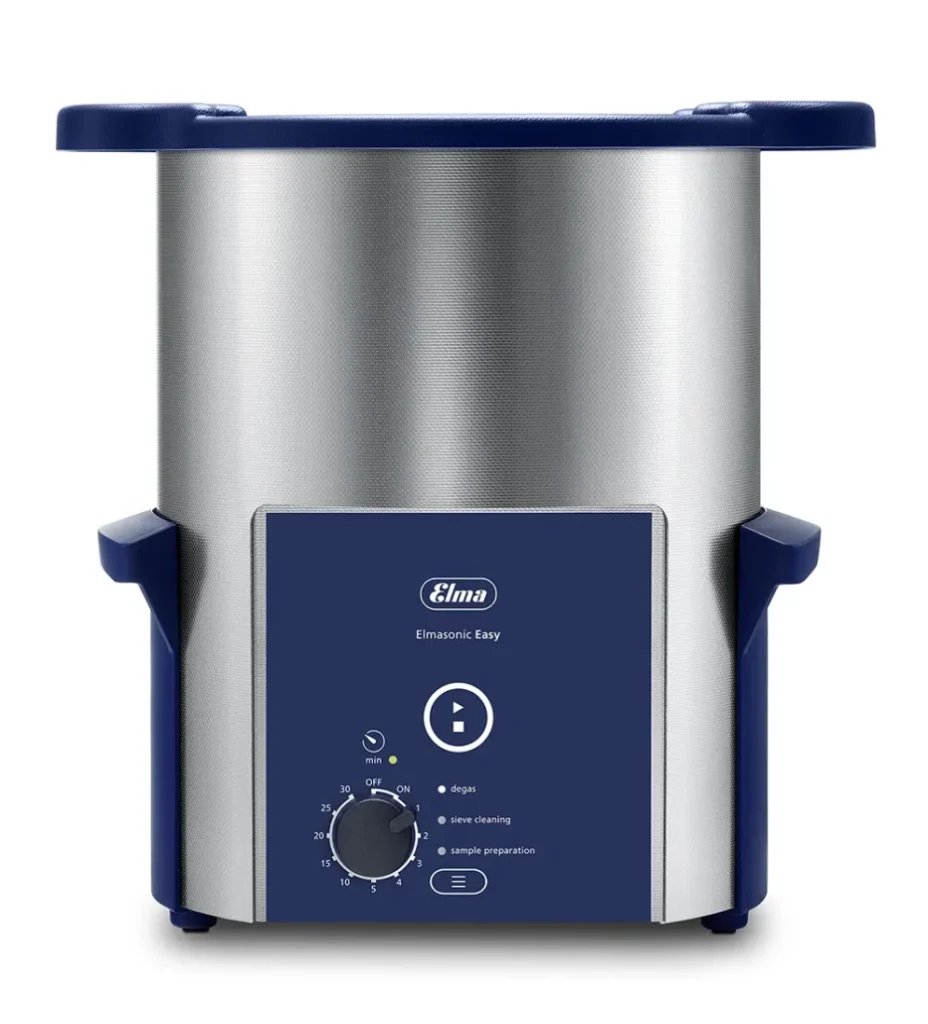
Safe Cleaning Fine Mesh Lab Sieves
Lab sieves, according to Thomas Scientific, are essential tools for particle size analysis in various industries, including pharmaceuticals, chemicals, and construction.
These sieves are designed to separate and classify particles by size, ensuring consistency and quality in your products and samples.
Lab test sieves that include an NIST traceable calibration certificate , designed to meet ISO 3310 standards or ASTM Standard E11 for products such as
- size analysis for green or raw coffee (ISO 4150)
- determining foreign matter in grains and cereals (ISO 5223)
- determining fines content in pellets
- particle size and density analysis in tobacco
- particle size distribution in soil samples
- aggregates in masonry mortar, concrete and road construction materials
- and similar products and applications where particle size is critical
can represent significant investments. The finer the mesh, the more delicate – and usually the more costly – the sieve.
After each use, lab sieves must be cleaned to completely remove all traces of product before reuse. This post describes two options that provide thorough sieve cleaning along with added utility in the lab.
A caution:
Cleaning fine mesh sieves with a soft brush does not guarantee complete particle removal. Avoid air or water jets for the same reason. All three methods risk sieve damage.
Ultrasonic Cleaners: A Safe Method to Clean Fine Mesh Sieves
A LabManager article by Baker and Tyler on maintaining test sieves notes “Sometimes with finer mesh sieves, it can be hard to get them clean because the openings are too small. If this might be the case for you, you can use an ultrasonic cleaner to clean your sieves.”
Employing ultrasonic energy to clean your lab sieves especially makes sense if you already incorporate an ultrasonic cleaner elsewhere such as a sonicator bath or for cleaning delicate laboratory instruments. This means you are familiar with how fast, safe and efficiently these units perform their tasks.
If you do not employ ultrasonic cleaners in your facility, but need a reliable method to clean lab sieves, here are options to employ ultrasonic energy for sieve cleaning and to meet other requirements where thorough cleaning and/or sample preparation are essential.
Fine Mesh Sieve Cleaning Option 1.
The Elmasonic Easy 50R and Elmasonic Easy 350R ultrasonic cleaners are designed to clean one sieve at a time.
Unlike most ultrasonic cleaners, these units feature round tanks that in addition to matching sieve configurations, more thoroughly distribute ultrasonic cavitation throughout the cleaning solution. Both units, as described below, have additional utility in the lab.
The 37 kHz frequency, 1.5-gallon capacity Easy 50R has an internal tank diameter of 9.4 inches, the height is 5.5 inches. Baskets or holders for 200 mm (8 inch) and 100 mm (4 inch) diameter sieves can be ordered separately.
For cleaning sieves with a diameter of 12 inches or more, the Easy 350R has an internal tank diameter of 23.4 inches, a height of 9.6 inches and a cleaning solution capacity of approximately 18 gallons.
Cleaning Test Sieves with the Elmasonic Easy 50R and Easy 350R
A “Sieve Cleaning” option is on the control panel of these units. This option alternates the Sweep mode for uniform cleaning with the powerful Pulse mode to remove soluble particles trapped in lab sieves.
Sieves are placed upside down in sieve basket holders (ordered separately). Activating the Sieve Cleaning option causes ultrasonic energy to safely remove loose and tightly adhering materials that fall to the bottom of the tank.
At the end of the cleaning cycle, remove the sieves, rinse as necessary, examine them to assure all contaminants are removed, and allow them to dry.
Other Useful Applications for Your Easy Ultrasonic Lab Sieve Cleaner
Other functions handled by the versatile Easy 50R and Easy 350R ultrasonic sieve cleaners include solvent degassing, sample prep and cleaning lab equipment.
Degassing whether for HPLC solvents or for preparing fresh ultrasonic cleaning solutions is accomplished by selecting the “Degas” option on the control panel. This operates the cleaner in an on-off mode that causes air bubbles to form, rise and burst.
Dissolving difficult samples and performing chemical extraction in a fast and safe manner is accomplished by selecting the unit’s “Sample Prep” option.
Processing can take place in glass beakers or flasks containing an appropriate solvent. These are suspended at least one cm in the tank containing water and a few drops of surfactant. The Sample Prep option can also be used for routine instrument cleaning in an ultrasonic cleaning solution using the unit’s optional stainless steel mesh basket. There is an on-off key for standard cleaning and a timer showing remaining time.
Both of these ultrasonic cleaners can be fitted to accept an optional laboratory stand and clamp to hold flasks and solvent bottles at the correct position in the water bath. The round geometry of the tank focuses the mixing action toward the center, offering very high intensity solution processing.
Fine Mesh Sieve Cleaning Option 2
Combine the 7.5-gallon Elmasonic EP300H or Select 300 ultrasonic cleaner with the Elma SRH 4/200 sieve rotation holder.
Ultrasonic cavitation produced by the Elmasonic EP300H and Select 300 units create billions of microscopic vacuum bubbles. These implode vigorously against the surfaces of objects being cleaned to quickly and safely dislodge contaminants. The process is described in how ultrasonic cleaners work.
The units operate at the popular 37 kHz ultrasonic frequency. Features include a heater (30⁰ – 80⁰C) and a timer that automatically shuts units off at the end of the cleaning cycle. Both options include a Dynamic mode that combines Sweep to assure even distribution of ultrasonic cleaning power and Pulse – a 20% boost in power – to remove particularly stubborn contaminants or degas fresh cleaning solutions. Cleaning tank dimensions are 19.9 x 11.8 x 7.9 inches (LWD).
Cleaning Test Sieves with the Elmasonic EP300H and Select 300
The electrically powered SRH 4/200 noted above is positioned inside the ultrasonic cleaner and holds up to 4, 200-mm (8 inch) lab sieves. These are clamped in a slightly canted position and rotated into and out of the ultrasonic cleaning solution. This rinsing action contributes to the sieve cleaning process.
Because the screens are canted, particles fall to the bottom of the cleaning tank and are not trapped in the laboratory sieves themselves.
When the ultrasonic cleaning process is complete, the entire unit is lifted from the tank and placed on a drain board for drying and reuse.
If the sieves are used to separate insoluble particles such as rock or bone fragments lab personnel should employ a visual inspection to see if particles are geometrically locked in the mesh. If so use a soft brush to carefully dislodge them.
Other Lab Applications for the EP300H and Select 300
When the ultrasonic units are not cleaning test sieves there are other lab applications they can perform – thus increasing their value and utility.
Examples include cleaning lab glassware and other tools that must pass stringent cleanliness requirements to avoid cross contamination.
Ultrasonic cleaning is especially important in order to minimize breaking or other damage to delicate and costly laboratory instruments made of glass, porcelain, ceramics, plastics, and metals.
And, as noted earlier these units can also be used as a sonicator bath to extract active pharmaceutical ingredients (APIs) from excipients, dissolve samples prior to content uniformity testing, prepare samples for potency assays and aid dissolution testing.
To support these activities, Tovatech offers a catalog of ultrasonic cleaner accessories. They complement Elma’s new modular baskets featuring a punched pattern on the base and side walls.
With this design baskets can be subdivided horizontally and vertically enabling researchers to simultaneously conduct, in different sections, a variety of analyses requiring different sample containers and solvents. Pin sets, sample holders and other configuring options are presented in the comprehensive product information catalog.
Other Tips for Cleaning Fine Mesh Sieves
As with any process involving ultrasonic cleaning, best results can be achieved by first removing loose contaminants in a way that does not damage delicate screens.
For the ultrasonic sieve cleaning as well as for cleaning other lab equipment we recommend biodegradable neutral pH, foam-inhibited cleaning concentrate Elma Lab Clean N10.
Diluted to 2% with water it is especially effective in removing emulsions, residues of markings and labels, lime soaps, light greases and oils, fingerprints and dust.
After repeated cycles, cleaning efficiency will drop off. This signals that it is time to replace the cleaning solution. Drain the tank and follow local regulations regarding solution disposal. Take the time to clean the tank as described in the user manual.
In Conclusion
This post provides ultrasonic cleaners and equipment options aimed at safely and efficiently cleaning costly fine mesh laboratory sieves.
The options offer additional value in their ability to perform other functions including ultrasonically cleaning lab equipment and serving as sonicator baths used in sample preparation and similar activities.
Questions on Cleaning Test Sieves?
For unbiased advice and answers to any ultrasonic cleaning questions you may have please contact the experts at Tovatech.


